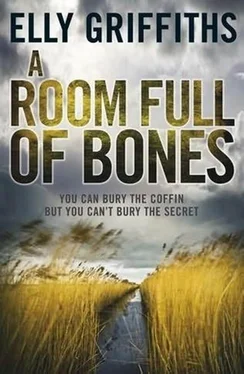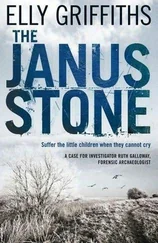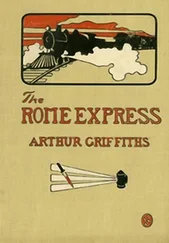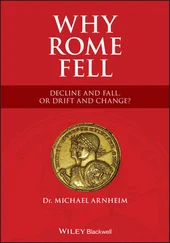‘Think it’s best to get this out of the way. I used to be Jan Tomaschewski. I published quite a lot under that name. Five years ago I became Janet. It’s better to say so straight away, otherwise you’ll be thinking to yourself “Isn’t she tall? Hasn’t she got big hands?” I used to be a man. End of story.’
Ruth, who had been looking at Janet’s hands, blushes. ‘Why Meadows?’ is all she can think of saying.
‘Well, Tomaschewski was such a mouthful and it was very patriarchal. Comes from the name Thomas. I was fed up with being named after someone called Thomas so I decided to name myself after something I liked. I live near the water meadows so I thought – meadows.’
‘It’s lovely,’ says Ruth. ‘I used to hate my name. Too plain and biblical. Maybe I should change it.’
‘No,’ says Janet decidedly. ‘Ruth Galloway suits you. I understand you’re a friend of Cathbad’s? There’s another one who changed his name.’
‘Yes,’ says Ruth. ‘I can never think of him as Michael.’
‘Well, Michael was an archangel,’ says Janet. ‘A rather ambivalent figure.’
Ambivalent in what way, thinks Ruth. Angels are famously sexually ambivalent, of course, and Lucifer was an angel before going over to the dark side. Again the line between saints and sinners is rather blurred.
‘So you want to know about Bishop Augustine,’ says Janet. ‘He’s the flavour of the month with you archaeologists. I wanted to be at the opening of the coffin. I came to the first event but it was cancelled. They wouldn’t let me come to the second, said it was private.’
‘You would have enjoyed it,’ says Ruth. Briefly, she tells Janet about her discovery. It goes down big. Janet gasps, putting her hand to her mouth. ‘Oh my God! I can’t believe it.’
‘Can’t you?’ asks Ruth, rather disappointed.
‘Well, I suppose I can,’ Janet is recovering. ‘Augustine is a fascinating figure but there are some gaps in his biography. Or her biography. My God! I’m the last person who should start getting stuck on personal pronouns.’
‘What do we know about the bishop?’ asks Ruth tactfully, finishing her (delicious) coffee. The refectory really is a very pleasant place. It’s all glass and polished wood with high soaring ceilings, rather like a cathedral itself. A cathedral of food; that’s Ruth’s kind of worship.
‘We know a fair amount thanks to Prior Hugh. He was the prior when Augustine was bishop. The prior would have been responsible for the day-to-day running of the cathedral and Hugh left an incredibly detailed account of his work – how many candles were used, what the monks ate, how much was given in alms – all that sort of thing. But he was also a chronicler and he wrote about prominent figures of the times, principally Bishop Augustine.’
‘Do we know anything about Augustine’s childhood?’
‘Well he… I’m going to call him “he” if that’s OK, it’ll take some time to get used to the other… he came from a relatively humble background. The Smiths weren’t nobility then. They made their money in the 1500s, they were one of the families that got rich from the dissolution of the monasteries, but in the 1300s they were just ordinary craftsmen, guild workers. Augustine’s father was a stonemason. Augustine was an only child, something that was quite unusual then, though he may have had siblings who died in infancy. Now I’m wondering whether there was a son who died and that Augustine in some way assumed his identity.’
‘We’ll never know I suppose.’
‘I suppose not. Hugh writes a lot about Augustine’s holiness but there are no physical descriptions, no clues about his sexual inclinations.’
‘Sounds as if Prior Hugh was quite a fan.’
‘He’s almost Augustine’s hagiographer. I think he really felt that Augustine was a saint. There’s a lot about his good works, his visions, his battles with the devil.’
‘His battles with the devil?’
‘According to Hugh, Bishop Augustine was constantly tormented by the devil. Sometimes in the morning he was black and blue after having tussled with the devil all night. Augustine used to have terrible dreams apparently. His housekeeper used to hear him crying out with pain but no one was allowed to enter his private apartments.’
‘Perhaps that was because they would find out his secret,’ suggests Ruth.
‘Maybe. Prior Hugh also says that Augustine refused to have a body servant. He sees it as evidence of Augustine’s humility but, of course, there could have been another reason.’
‘Is there anything else about Augustine’s private life?’
‘Not really. In his will he left money to pay for masses for his soul, nothing else. Prior Hugh mostly writes about Augustine’s spiritual life – the torments, the visions – it’s all quite apocalyptic at times.’
‘I heard something about a great snake,’ says Ruth.
‘Well, his statue in the cathedral shows Bishop Augustine with his foot on a snake. It was thought to represent the devil, and during one of Augustine’s many exorcisms Hugh reports seeing a huge snake, a “mighty worm”, appear in the sky. Hugh thought it was the devil being vanquished.’
‘Have you met Ted from the Field Team? He says there was a curse on the coffin. Whoever opened it would be destroyed by the great serpent.’
Janet nods. ‘That’s in Hugh’s account. It was always believed that Augustine was buried in the cathedral and there’s a stone with an inscription saying “vex not my bones” and a warning about the snake. But when they excavated in the 1830s they found that the vault was empty. No bones at all.’
‘Because Augustine was buried in the other church? St Mary’s Outside the Walls?’
‘It’s possible. There was a family connection with St Mary’s. Augustine was christened there and it’s thought that his parents were buried in the graveyard. Of course, he might have left instructions to be buried there for precisely this reason, to prevent his body being examined after death.’
‘When did Augustine die?’
‘In 1362, the year that the great spire was destroyed by fire. Prior Hugh, of course, thought that was another omen. The devil getting his revenge. In fact, the cathedral was in for a rough few years. There was the Peasants’ Revolt in 1381 and Augustine’s successor, Bishop Henry Despenser, the so-called “fighting bishop”, led the troops against the peasants.’
‘Very charitable.’
‘Bishops weren’t necessarily very charitable or even very religious in those days. They were usually the younger sons of great noblemen, only interested in power or money. That’s what makes Bishop Augustine so interesting. He was genuinely spiritual. Of course, we can laugh at it now, all the visions and the battles with the devil, but Augustine was obviously rather a tormented soul. He was a true friend to the poor though. He doubled the amount of alms given by the monks and he founded schools and hospitals. Prior Hugh really thought he was a saint. There are stories of Augustine being able to heal the sick, even of bilocating, being in two places at once. Hugh recalls watching him praying by the Lady Altar at the same time that he was apparently administering last rites to some old woman in the village.’
Ruth has been listening with the kind of trance-like interest that she remembers from her best lectures at university. She has almost forgotten about the coffin, Ted’s warning, the dead body of Neil Topham. Janet brings her back to earth by asking, rather abruptly, ‘Why are you so interested? Apart from the gender thing.’
The gender thing, Ruth muses, that’s one way of putting it. Aloud she says, ‘There were a few other odd things about the coffin. The body was wrapped in silk which had been coated with beeswax. There were the remains of a ceremonial crosier and a single shoe made of leather, very intricate. Why would the Bishop be buried with a single shoe?’
Читать дальше












